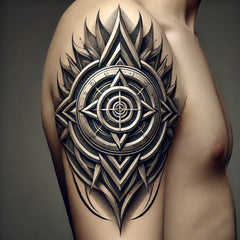Your cart is empty now.

Burnt Orange - University of Texas Trademark of Pantone 159
- 01 August, 2024
- Nyall Engfield
The University of Texas's trademark on its distinctive burnt orange color has been in the news recently for a couple reasons:
So in summary, UT's iconic burnt orange color, as a legally registered trademark, gives the university the right to control its use and prevent unauthorized usage by others. UT's enforcement of its burnt orange trademark has led to some public disputes and discussion about the extent of the university's control over the color. Maintaining a consistent brand identity is clearly a high priority for UT.
- In 2010, UT shut down two iPhone apps produced by a company called Mutual Mobile, due to their use of UT's trademarked "Burnt Orange" color and mentioning "Texas" in their names. UT argued this could lead people to believe the apps were official UT products when they were not.
- UT has been very protective of its trademarked burnt orange color, Pantone 159. The university carefully controls use of the color to ensure it is always represented correctly on uniforms, merchandise, etc. UT's legal protections prevent unauthorized use of the color by other entities.
- Some fans have noticed recent UT sports uniforms and merchandise using a lighter shade of orange compared to the traditional burnt orange. This has led to some debate and questions about consistency in UT's use of its signature color.
- In general, UT is known for aggressively defending its trademarks, including the burnt orange color. As one of the most recognizable and valuable college sports brands, the university works hard to control use of its intellectual property like color, logos, and slogans.
The article "The Story of Burnt Orange" from the Alcalde, the alumni magazine of The University of Texas at Austin, delves into the rich history and evolution of the university's iconic burnt orange color. Key points from the article:
- In 1885, UT student Gussie Brown first suggested orange and white as the school's colors before UT's first baseball game against Southwestern University.
- Over the years, UT teams wore various shades of orange, sometimes bright, sometimes dark. In 1900, the Board of Regents officially adopted orange and white as the school colors after a vote by students, faculty, and alumni.
- In 1925, Coach E.J. "Doc" Stewart introduced a darker "burnt orange" shade to distinguish UT from other orange-wearing schools like Tennessee. Coach Clyde Littlefield worked with a mill in 1928 to establish a consistent burnt orange hue called "Texas Orange."
- Burnt orange dyes became scarce during WWII rationing, so UT reverted to a lighter orange in the 1940s-50s. Coach Darrell Royal reintroduced burnt orange in the late 1950s.
- In 1966, some traditionalist students petitioned to switch back to a lighter orange, but a faculty committee affirmed burnt orange as the official color in 1967.
- Today, Pantone 159 is UT's official burnt orange shade. It is a trademarked color, integral to the university's brand identity. UT carefully controls the color's use on merchandise and uniforms.
- UT's simple, consistent burnt orange and white uniforms have become a classic look, consistently ranked among the best in college sports. The color has deep associations with UT's identity and the passion of Longhorn fans.
Search
Archive
- August 2024
-
- How to avoid being locked out of your Amazon product listings
- If you tattoo a trademark on your body - Skinvertising- can you be sued?
- Burnt Orange - University of Texas Trademark of Pantone 159
- Jungle Superheroes - famous characters similar to Tarzan and the difficulties of maintaining a monopoly
- What happens to the trademark rights if the renewal is missed



